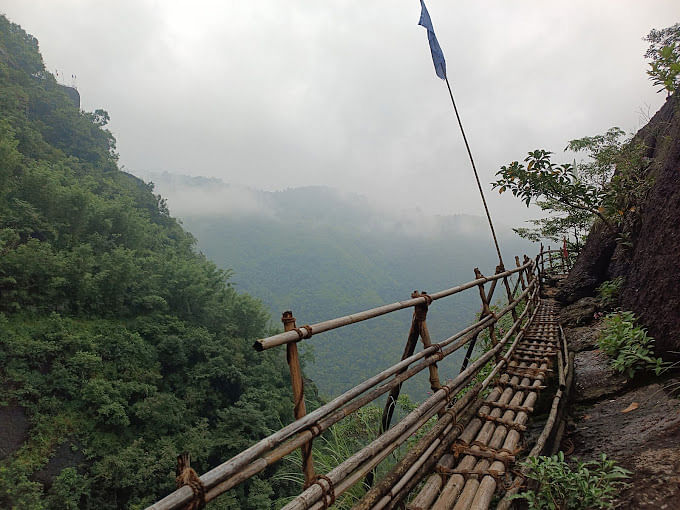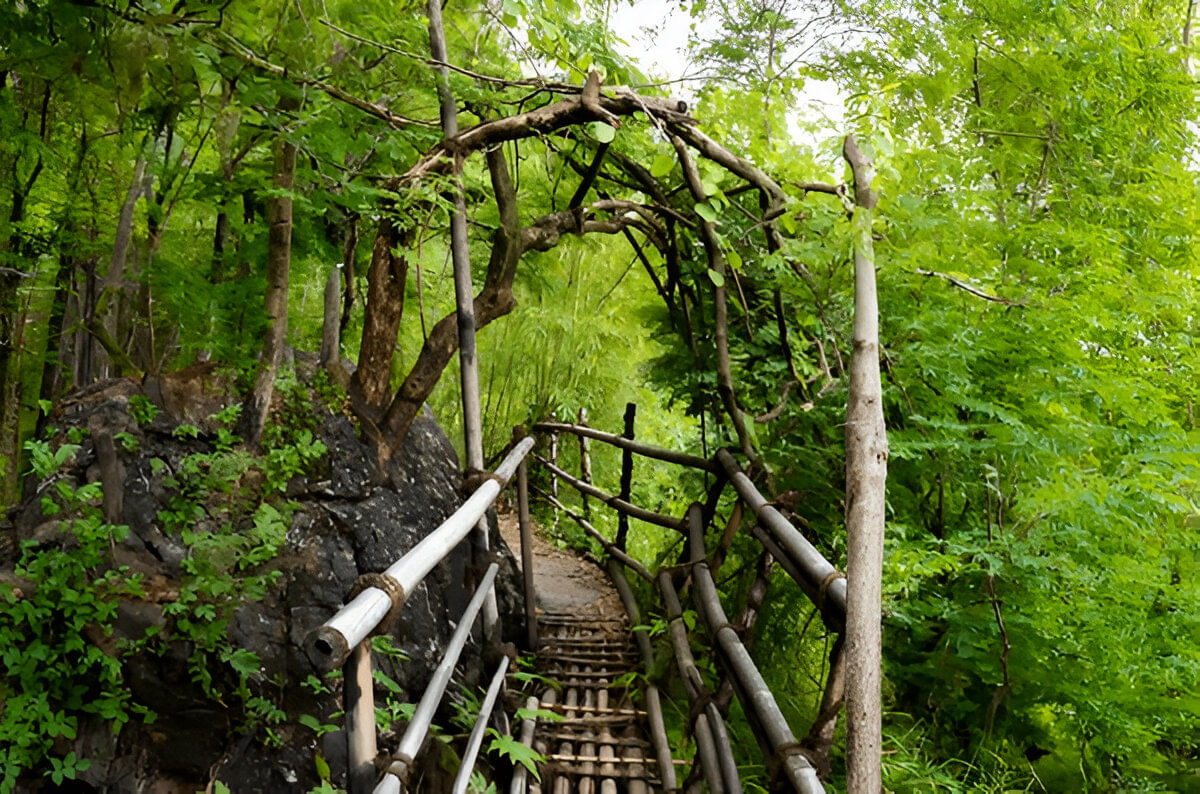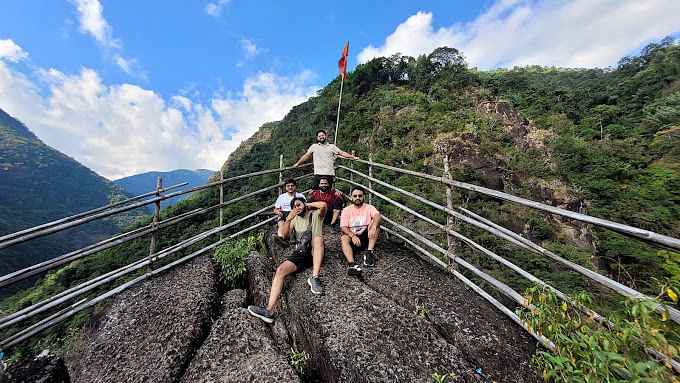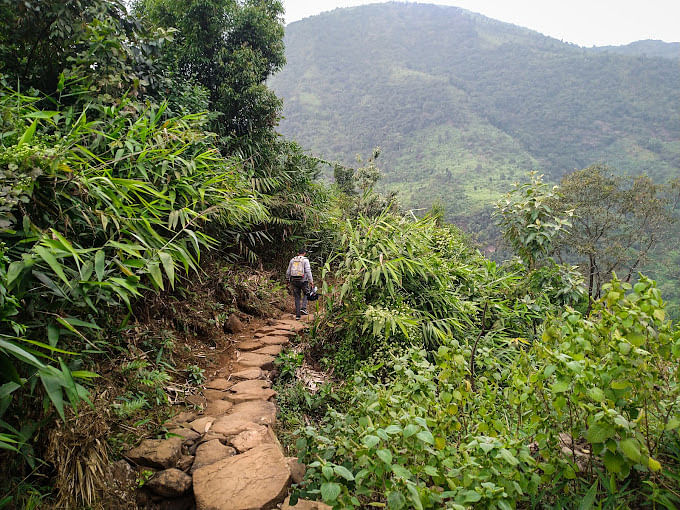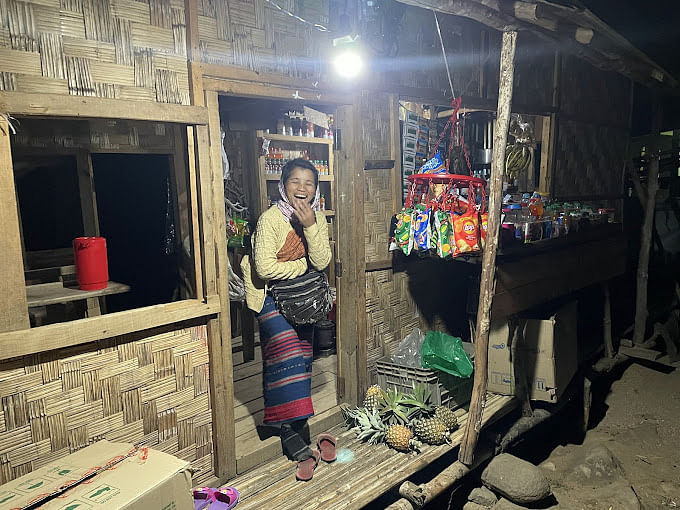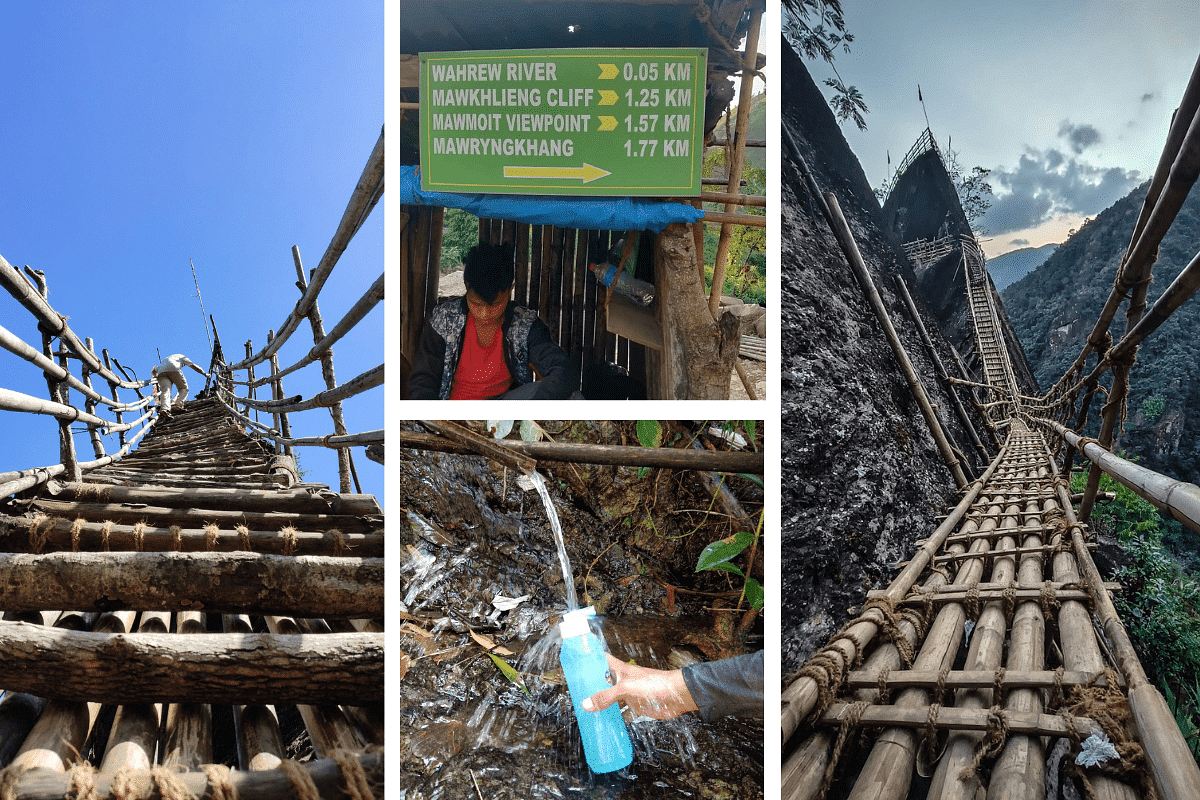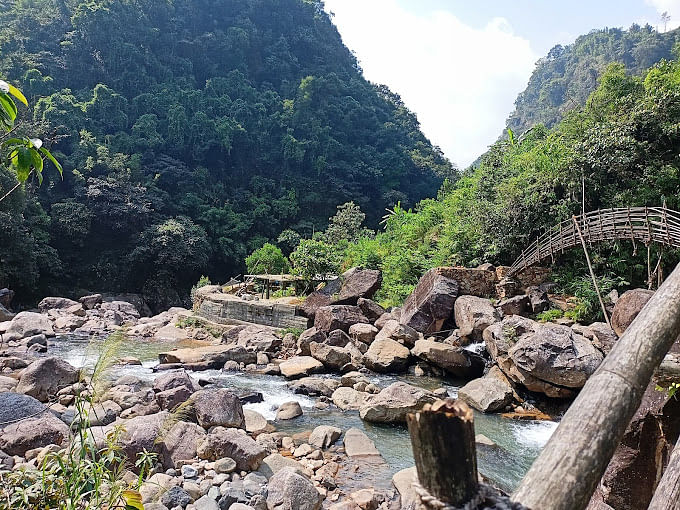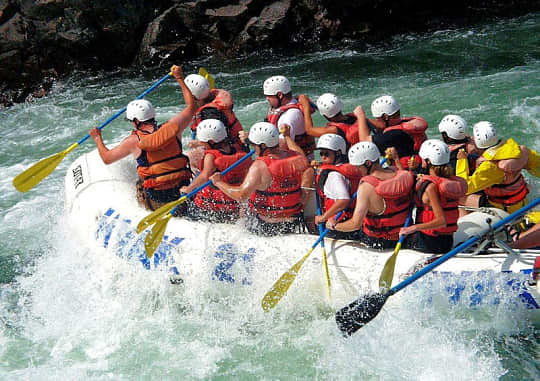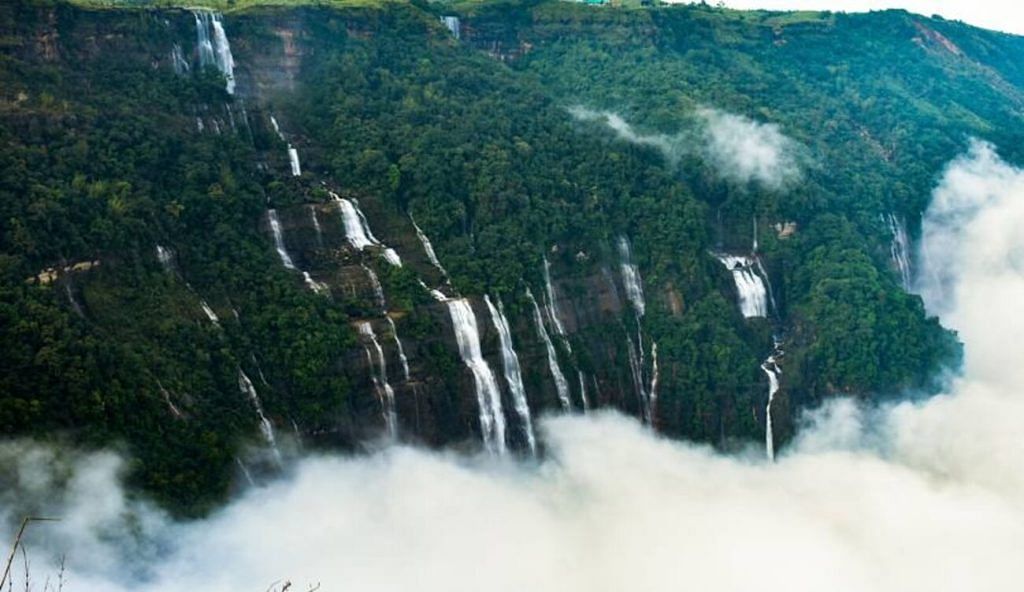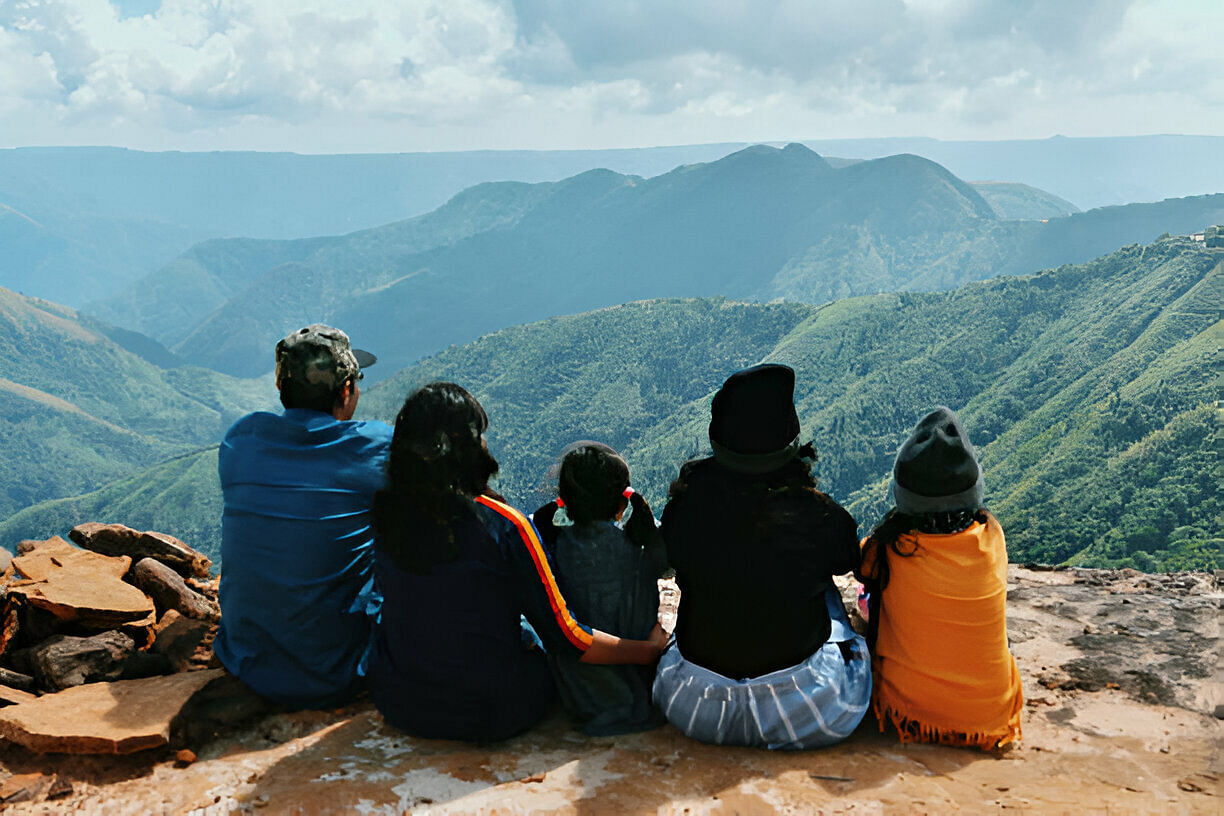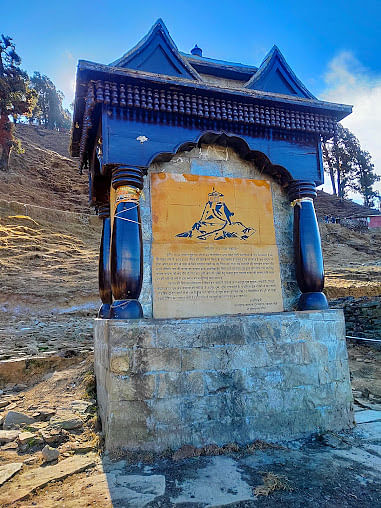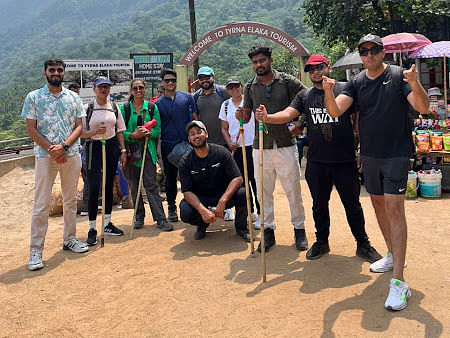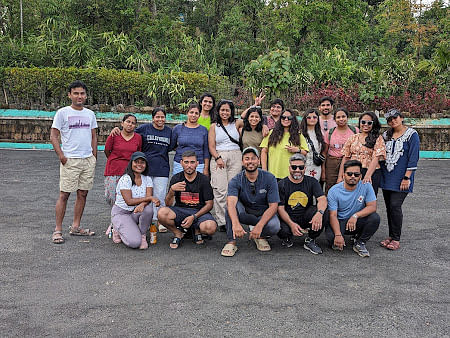If you’re looking for adventure that blends thrill, culture, and jaw-dropping views, the Mawryngkhang Bamboo Trek should be high on your list when exploring Meghalaya travel packages . Known as the “scariest trek in Meghalaya,” this trail isn’t just about the hike—it’s about daring yourself to walk across bamboo bridges and skywalks built along the edge of cliffs, all crafted by the local villagers.
This offbeat trek takes you through bamboo forests, rivers, and waterfalls while immersing you in Khasi legends and community life. It’s equal parts adventure and culture, making it a must-do experience in Meghalaya.
So pack your bags, lace up your shoes, and get ready to walk the trail where thrill meets tradition in the heart of Meghalaya!
Facts about Mawryngkhang Bamboo Trek
- Location: Meghalaya, India
- Trail Length: 5 km
- One-way Trek Time: ~2.5 hours
- Total Round-Trip Time: 4–5 hours
- Start/End Point: Wahkhen Village
- Difficulty Level: Moderately easy
- Terrain: Narrow mountain-edge paths with bamboo groves and small streams
- Accessibility: Reachable via Shillong by local transport or hired cab
- Guides Recommended: Yes, for navigation and safety
- Best For: Short trekking trips or day hikes
Suggested Read: Rhododendron Trek in Meghalaya | What to Expect
Entry & Guide Charges for Mawryngkhang Bamboo Trek
Heading to the Mawryngkhang Bamboo Trek? Here’s what you need to know about costs. The entry fee is around ₹100 per adult, while minors and students get a sweet discount at ₹50. If you’re driving, parking a four-wheeler will set you back ₹50.
Thinking of hiring a guide? It’s totally optional, but having a local with you makes the trek much safer and more enjoyable. Guide fees usually fall between ₹500 to ₹800, depending on how long you’re trekking and the size of your group.
Best Time to Plan Bamboo Trek in Meghalaya
The best time to plan Bamboo trek in Meghalaya is October to April, when the weather is cool, dry, and perfect for trekking. Trails are safer and less slippery, and you get clear skies for stunning views.
Monsoon months (June–September) are best avoided due to heavy rain, muddy paths, and swollen streams. Early spring (March–April) is still good, though slightly warmer. Planning your trek during the peak season ensures a safe, scenic, and enjoyable adventure in Meghalaya’s bamboo forests.
How to Reach Mawryngkhang Bamboo Trek
The Mawryngkhang Bamboo Trek route starts from the remote Wahkhen Village in East Khasi Hills, Meghalaya. Public transport is limited, so planning your journey is key.
From Shillong:
- Taxi: The easiest option is a private taxi (40–50 km, ~2–3 hours). Drivers usually wait while you complete the trek.
- Self-Drive: You can rent a car or scooter. Roads are mostly good, though the final stretch can be rough.
- Shared Taxis: Rare, but sometimes available up to Pomlum Village; you’ll need another ride or a short walk to Wahkhen.
From Guwahati:
- Drive directly (~140 km, 4–5 hours) or first reach Shillong, then follow the Shillong route.
By Air/Train:
- Guwahati is the nearest airport and railway station. From there, take a bus or taxi to Shillong, then continue to Wahkhen Village.
What to Expect on the Mawryngkhang Bamboo Trek
The Bamboo trek, Mawryngkhang begins with steps leading down to the Wahrew River, followed by bamboo bridges, forest paths, and wooden ladders. As you go higher, the trail runs along steep cliffs and finally reaches the bamboo skywalk at Mawkhlieng Cliff, a narrow section built on the edge of a rock face, offering both thrill and breathtaking views.
1. Starting Point – Wahkhen Village
- Begin at the parking area with a minimal entry fee.
- Initial descent is via stone steps leading to the river.
2. Crossing the Wahrew River
- Walk across bamboo bridges built by locals.
- Enjoy the crystal-clear waters and soothing sounds of the river.
3. Walking Through Bamboo Forests
- Enter dense bamboo groves with gradual inclines.
- Spot birds, butterflies, and rich greenery along the way.
4. Climbing Ladders and Bridges
- Cross wooden ladders and bamboo bridges connecting steep rocky paths.
- The trail becomes more challenging as you climb higher.
5. Mawkhlieng Cliff & Bamboo Skywalk
- The highlight of the trek—narrow bamboo bridges and the skywalk on the edge of a vertical cliff.
- Offers thrilling valley views, making it one of the most exciting activities to experience during Bamboo trekking in Meghalaya.
Accommodations Near Mawryngkhang Trek
The Mawryngkhang Bamboo Trek starts from Wahkhen Village, but the village itself does not have hotels or guesthouses. If you’re planning an overnight stay, here are the best options nearby:
1. Stay in Shillong
Shillong is the most popular and convenient base for the trek. The city offers a wide range of hotels, guesthouses, and homestays. From here, you can hire a taxi or drive to Wahkhen in about 2–3 hours.
2. Stay in Cherrapunjee (Sohra)
Another good option is Cherrapunjee, which is known for its own waterfalls and living root bridges. Homestays and guesthouses here are ideal if you’re combining the trek with other sightseeing.
3. Stay in Pynursla
Pynursla is the closest town to Wahkhen and has some modest guesthouses. Staying here reduces the travel time to the trek starting point compared to Shillong or Cherrapunjee.
4. Staying in Wahkhen Village
There are no formal accommodations in Wahkhen, but in rare cases, locals may allow trekkers to stay overnight in community spaces if requested in advance. Carrying your own sleeping bag or basic gear is recommended if you plan this option.
Suggested Read: Top 11 Places for Hiking in Meghalaya
Essential Tips for the Mawryngkhang Bamboo Trek
- Start Early: Begin your trek in the morning to avoid crowds and have enough time to return before dark.
- Wear Good Footwear: The trail includes stairs, bamboo bridges, and narrow skywalks—so sturdy shoes with good grip are a must.
- Carry Water & Snacks: There are limited shops on the trail, so keep your essentials handy.
- Hire a Local Guide: While optional, a guide ensures safety, helps with navigation, and shares local insights.
- Is Mawryngkhang Trek Safe? Yes, it is generally safe if you follow the trail carefully, avoid rushing, and wear proper shoes. The bamboo bridges and skywalk may feel scary but are well maintained by locals.
- Avoid Monsoon Season: June to September brings heavy rain, making trails slippery and risky.
The Legend of U Mawryngkhang – The King of Stones
Meghalaya is known for its fascinating Khasi legends tied to natural landmarks—the tragic tale of Nohkalikai Falls, the battle of Kyllang Rock, and many more. The Mawryngkhang Bamboo Trek also carries a story deeply rooted in Khasi culture.
The word Mawryngkhang means “King of Stones”, with “U” added as a mark of respect. According to folklore, the rocks once fought for supremacy, and the mighty U Mawryngkhang emerged victorious, earning the title “King of Stones.”
The story doesn’t end there. U Mawryngkhang fell in love with Kthiang, a maiden rock from a neighboring kingdom. But another rock, Mawpator, also desired her, sparking a fierce battle. During the fight, Mawpator severed U Mawryngkhang’s left hand—a mark still visible today from the Mawmoit Viewpoint. Yet U Mawryngkhang struck back with full force, beheading Mawpator, whose head is said to lie in the valley below.
At the summit, you’ll see U Mawryngkhang standing tall beside Kthiang, his eternal partner. Listening to this tale from local guides is one of the most memorable activities to experience during Bamboo trekking in Meghalaya.
Final Words on Mawryngkhang Bamboo Trek
The Mawryngkhang Bamboo Trek route is more than just a trail—it’s a blend of adventure, culture, and local craftsmanship that makes it one of the most unique treks in Northeast India. From bamboo bridges and skywalks to Khasi folklore and community tourism, every step offers something memorable. Whether you’re an adventure seeker or a cultural explorer, the Mawryngkhang Trek Meghalaya promises a thrilling yet authentic experience that stays with you long after the journey ends.





